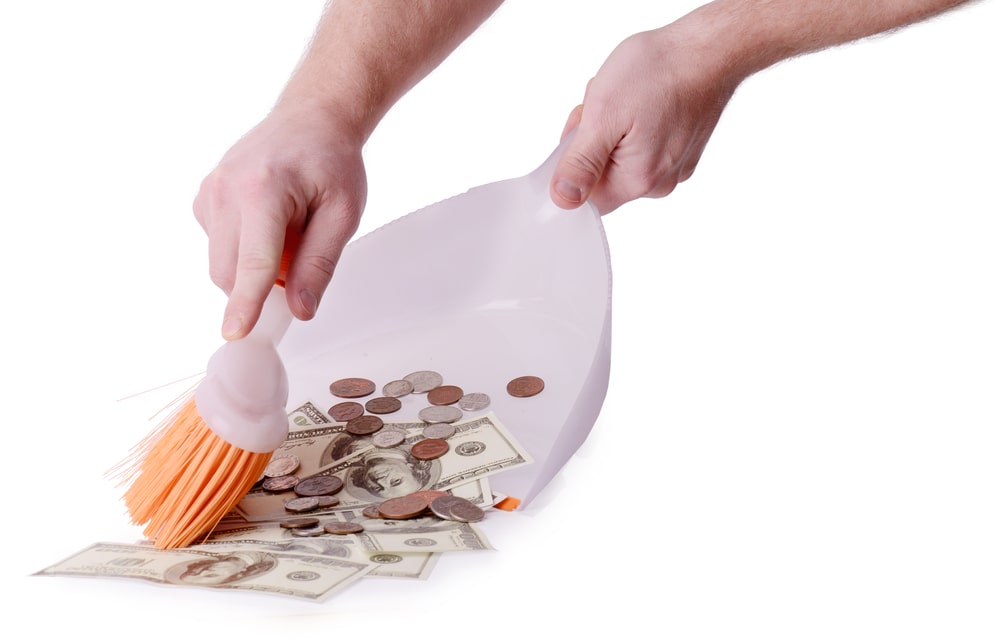
With the advent of spring our attention shifts towards growth and development. Some big items on many people’s to-do lists range from spring cleaning at home to readying their garden in preparation for summer. It is also a good time to focus on your spring financial cleaning checklist to take inventory and evaluate the progress of your goals and financial portfolio.
Life can pull us in many directions, but it is important to take some time – at least once a year – to reexamine your financial wellness and clean up any areas that have been neglected or not tended to.
Financial Spring Cleaning Checklist:
- Emergency Savings: Review your emergency savings or rainy-day fund to ensure you have three to six months of spending in very safe assets like cash or cash equivalents. If your fund has dropped below the target, replenishing these coffers should be your top savings priority. Remember, your emergency fund is the first level of defense- cash that you can easily access in case of unexpected expenses or loss of income in a time of need.
- Review Short- to Long-Term Goals: Think about the short- to long-term goals for you and your family. Some examples can be saving for retirement, funding your kids’ college, traveling more, paying for a wedding, buying a home, or retiring earlier. Have your goals changed? Or has the timeline moved up? It is important to check in on your goals and their timeline to ensure your investment strategy is aligned appropriately. For example, you’ll want to invest short-term cash needs in safer investments to focus on preservation and limit your downside risk. Conversely, for longer-term goals (e.g., retirement) you have the capacity to take on risk in the market and weather the volatility, since these are funds that you will not touch for years and years. This strategy allows you to capitalize on market appreciation over the long-term.
- Budgeting and Spending: Review your spending year-to-date. Are you spending more than your income? Are there spending categories that are abnormally high (e.g., food, shopping, travel)? Did you intend to spend money on these categories, or should you recalibrate? Do you have a large surplus that could be invested? It is easy to leverage technology through a budgeting app to aggregate various accounts and credit cards to get a complete picture of your spending and then keep tabs through the creation of a budget. While tracking spending can be uncomfortable, transparency is key to creating both financial awareness and healthy habits. As advisors, we have seen unchecked spending become “death by a thousand cuts,” which leads to clients needing to make drastic changes later in life. This might mean having to work longer and/or pair back your lifestyle in retirement due to not saving enough. Don’t fall into this trap!
- Savings: In order to fulfill your goals, check in with how you are tracking your savings strategies. Do you have the bandwidth to deploy more cash to savings? Is it helpful to set up automatic transfers each month into your investment account (“out of sight, out of mind”)? Did you get a raise or bonus to increase your savings? It is important to maximize your savings over the long term to capitalize on compounding returns in your portfolio, so remember to save early, often, and purposely.
- Debt Management: Review your outstanding debt and prioritize paying off higher-interest loans (those charging interest over 7%), such as credit cards. Utilize the avalanche method to limit larger accruals of interest before focusing on lower-interest debt. Paying off high-interest debt should also be prioritized before most savings strategies (except for emergency savings), given that any appreciation or income earned may be canceled out by accumulating interest. It is also important to monitor your debt-to-income ratio (DTI), which is the monthly debt payments owed, divided by your gross monthly income. A good rule of thumb is to keep this ratio at no more than 36%. This becomes even more critical when you need to get a loan or mortgage, given that lenders will review your DTI.
- Insurance Coverage: Insurance is not always top of mind given that many do not end up tapping it in their lifetime, but it is critical to your financial health and well-being. Review your current insurance coverage and go through the worst-case scenarios (e.g., death, disability, healthcare need) to see if the insurance benefit along with your savings would provide for adequate cash flow for you and your family, in perpetuity.
- Talk to Your Advisor: Make sure to set up a meeting with your financial advisor to keep them apprised of any changes in your life – from goals to financial circumstances. It’s important to have a dialogue so you can partner and collaborate with your advisor on the best path forward, weighing any tradeoffs. Don’t have an advisor, or don’t want to tackle your financial checklist alone? Schedule a complimentary call with HTG here to learn more about how we can work together on your financial future.